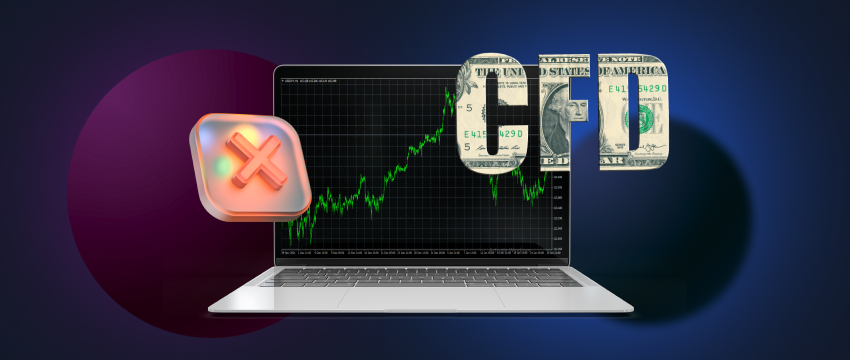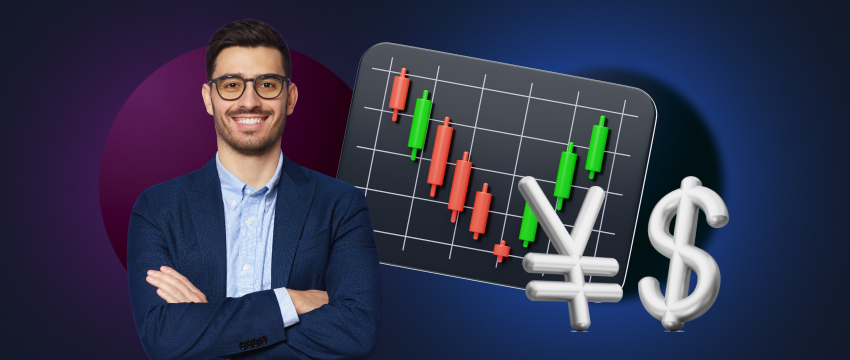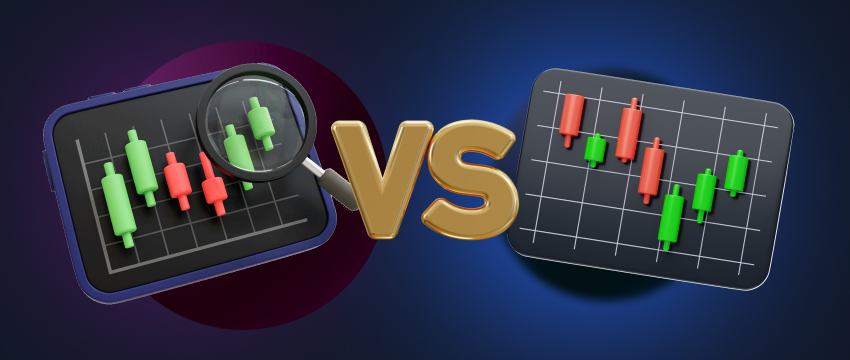CFD trading has gained interest from many traders in recent years due to its flexibility. It can be rewarding both financially and emotionally. By researching, preparing for, and completing trades successfully, traders can find enjoyment in the challenge.
However, trading is not just fun and games, and, as people often say, great opportunities come with great risks. The first and probably the most grave mistake that CFD traders make is poor risk management.
This article discusses why poor risk management is the biggest mistake in CFD trading. It also provides solutions to increase your chances of success while minimizing risks and errors.

Getting familiar with risk management in CFD trading
Risk management involves assessing and evaluating risks. It also includes organizing resources to reduce the chance of losses or minimize the impact of adverse events.
In CFD trading, risk management focuses on minimizing losses. This helps protect the investment capital and allows the trader to stay in the market longer.
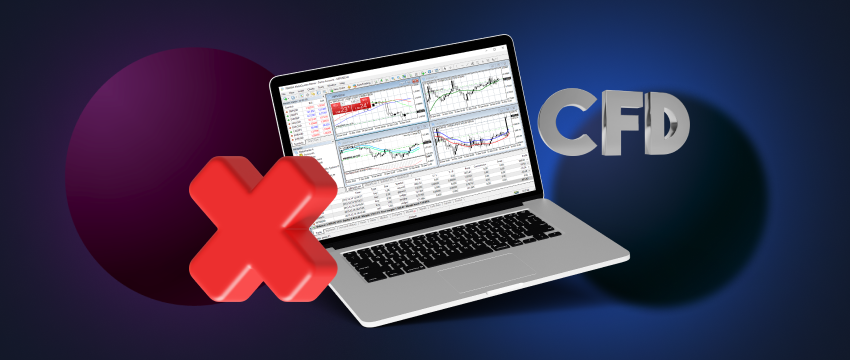
Why poor risk management is the biggest error in CFD trading
Leverage misuse:
Leverage can help the trader gain a bigger capital exposure by using a smaller initial capital. While leverage serves to increase profits, it increases losses as well.
Traders, especially beginners, often use leverage incorrectly by opening trading positions that exceed their account size. This could result in very huge losses which could easily eliminate their trading capital.
Lack of stop-loss orders:
A stop loss order is a must-have in trading as it helps traders minimise their risk. It closes a position whenever the market moves against the trader’s expectations, based on predefined parameters.
Traders often risk their money without any protection. They frequently do not use stop-loss orders. Without a stop-loss, a market shift can greatly increase losses.
Overtrading
Overtrading involves managing or trading an excessive number of positions at once. This behavior often stems from a desire to recover lost money or profit from every market opportunity.
Some of the distinct drawbacks of overtrading include high exposure to overall risk, emotional decisions, and mostly, high transaction costs which result in wiping out an account within a short period of time.
Emotional CFD trading:
Emotions can play an important role in decision-making. In particular, fear, greed and overconfidence are known to cause a trader to make unsound decisions that fall outside their trading plan.
For instance, fear may make a trader close positions before they can attain the desired targets, while greed can make traders hold on to bad positions in the hope of turning them around
Risk management entails making choices based on reason which allows traders to manage their account in an effective manner, while minimising risk and losses.
Failure to diversify:
It is the process of trading in a number of unrelated securities or industries to avoid high risk. One of the mistakes traders tend to make is focussing on making a lot of money from a particular asset or market, which increases the risk of CFD trading. If that particular market trends in the wrong direction, the effect on a trader’s portfolio can be immense.
Diversification plays a significant role in reducing this kind of risk because it spreads risk across different assets, so when one asset is making losses, then another asset will offset risk by making profit.
List of risks associated with poor risk management
Capital erosion:
The first area that can be affected by poor risk management is trading capital which can be wiped out immediately.
Traders may incur significant losses in their trades due to the lack of risk control which can wipe out a trader’s account, resulting in the loss of their hard-earned money and disappointment, which brings us to the next effect, emotional stress.
Emotional stress:
When our financial expectations and earnings are so high that they are not met, we are forced to face enormous losses and emotional distress. A trader may develop anxiety, depression, and even lose confidence which can affect their performance in trading.
Such an experience early on in one’s trading career can really affect them and stop them from trading ever again. Maintaining a healthy mindset is important for your long-term trading success.
Missed opportunities:
In this way, traders may find themselves in a position where they are unable to fully explore trading opportunities after a large loss in capital. Appropriate risk management makes it possible for traders to have enough capital to be able to trade as well as take advantage of those opportunities as they emerge.
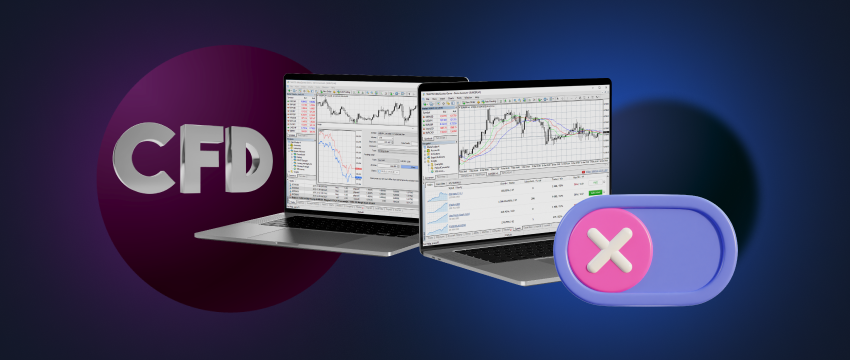
Measures to avoid poor risk management in CFD trading
Set realistic goals:
Traders should have targets for reasonable profit and to regulate the amount of risk. This includes the kind of market one focuses on as well as the trading strategy employed and the risk/reward ratio. It is evident that traders’ expectations can lead them to take on too much risk and eventually experience deeper losses.
Use stop-loss orders:
The use of stop-loss orders is one of the most essential risk management strategies. Every trader should know the maximum amount they can lose per trade and place the stop-loss order appropriately. This assists in controlling possible risks and protecting their trading capital.
Limiting the use of leverage:
Leverage is useful but it also equals more risk. Leverage should not be abused and traders should avoid overtrading where their position is bigger than their account balance.
Diversify:
Diversification should always be used to minimise risks. Due to the fact that the prices of securities or any other market may fluctuate in a way that is disadvantageous, traders should choose more than one market or type of asset to trade.
Maintain a CFD trading journal:
A trading journal is useful in tracking one’s trading performance, recognising mistakes, and avoiding making the same mistakes repeatedly.
In addition, noting a given trade’s rationale, as well as its result, assists the trader in monitoring his/her trading habits and modifying approaches as necessary.
Educate yourself:
CFD education is a lifelong process. Traders should be informed about the latest trends, and events and adjust their trading plans.
Watching webinars, reading articles and participating in trading forums can be helpful in gaining and expanding your trading skills.
Emotional discipline:
As a trader, you need to be able to manage your emotions in a proper manner in order to achieve the greater goal of having consistent profits. Traders should follow the set plan and avoid giving in to emotions.
In terms of maintaining emotional stability, one can use such practices as meditation, mindfulness, and regular breaks.
Seek professional advice for CFD trading:
If you are just starting to trade and are not very good at managing risk or maybe you are just not ready to do it, then getting help from professional traders or other financial experts can be helpful.
These professionals can therefore help in offering advice as well as recommending the right strategies to improve your risk management. Poor risk management is one of the biggest mistakes in CFD trading and can lead to monetary loss, emotional strain and time lost.
Nevertheless, by recognising the value of risk management as well as applying effective measures to limit risk, you can successfully preserve your capital, improve trading outcomes, and, thus obtain long-term success.
CFD trading can become a meaningful and rewarding activity when the trader is mature enough to realise that trading requires restraint, patience and calculation. Consequently, some trading tips to follow include setting trading goals, using stop-loss orders, limiting the use of leverage, diversifying your trades, and keeping a trading journal.
In this way, you will be able to enjoy the trading process and reach your desired goals, without stressing and losing excessive capital. Remember, trading does not necessarily mean no risk—as risks will always exist—but finding and using the right methods to minimise risk allows you to focus on long-term trading and expanding your account.
Disclaimer: This material is for general informational and educational purposes only and should not be considered investment advice or an investment recommendation. T4Trade is not responsible for any data provided by third parties referenced or hyperlinked in this communication.
